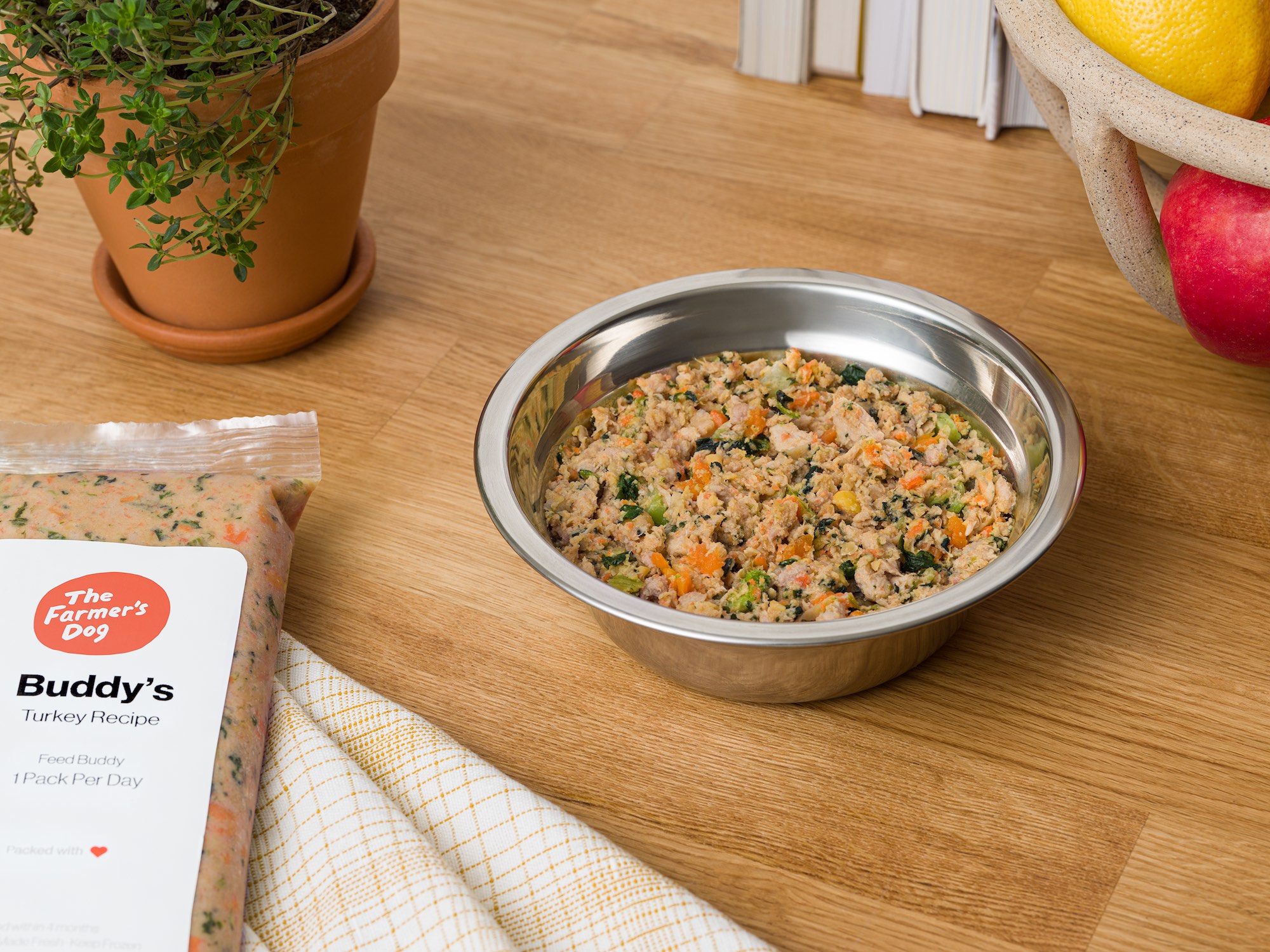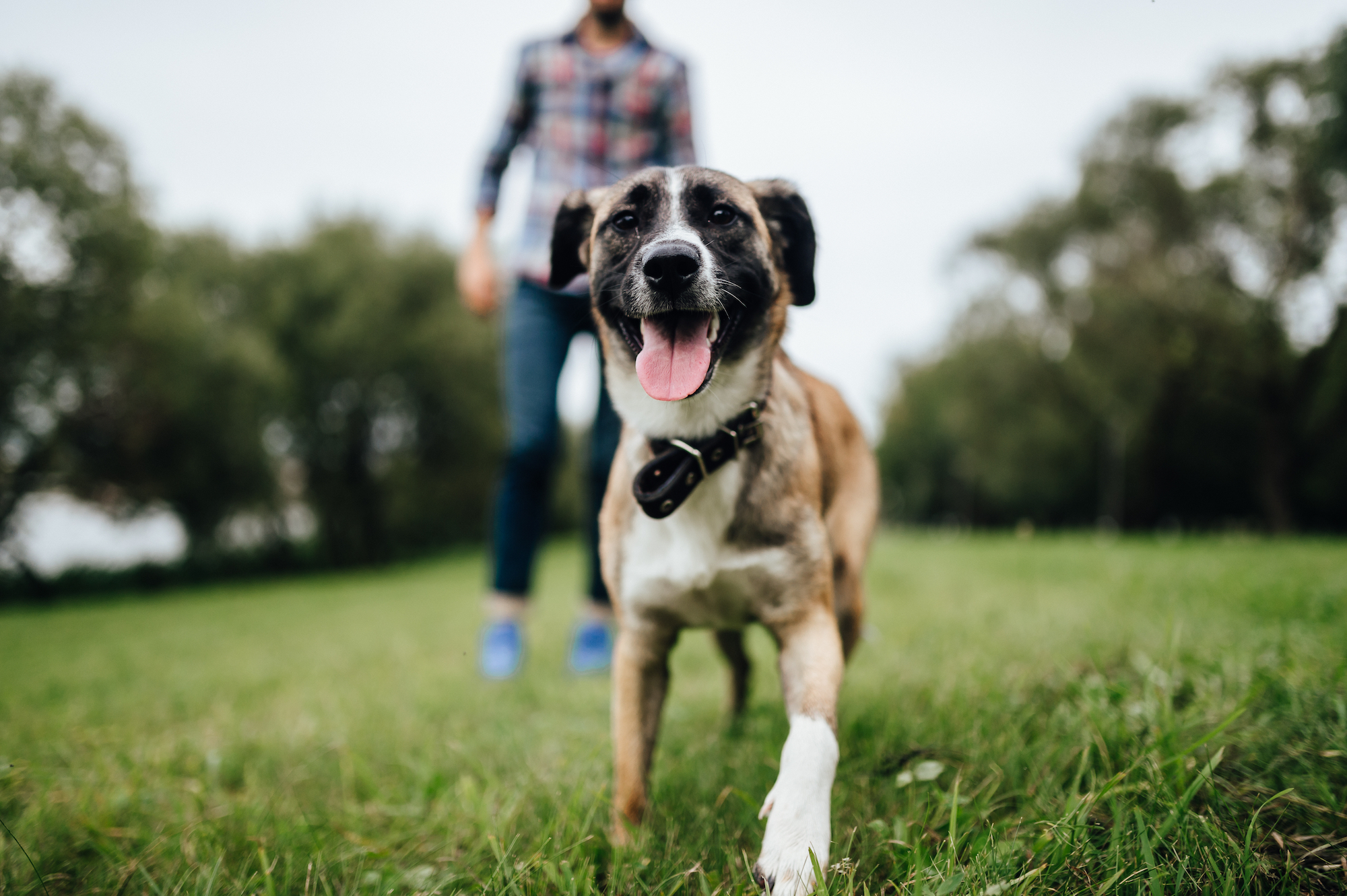Keeping your dog at an ideal weight is one of the best ways to improve their chances of a healthier, happier life.
Excess weight is, sadly, a leading health problem among companion dogs in the United States—research shows that more than half of all such dogs are overweight or obese. For a dog, being overweight comes with significant health consequences; it’s linked to ailments including arthritis, chronic kidney disease, bladder and urinary tract disease, liver disease, diabetes, heart failure, high blood pressure, and cancer.
On the other end of the spectrum, a dog who doesn’t get enough food may miss out on nutrients that are crucial for their day-to-day energy and long-term well-being.
Food, of course, plays a massive role in helping dogs lose and gain weight. Below, we walk you through how to tell if your dog is at a healthy weight, and what to do (including what to feed them) if they need to gain or lose pounds.
Is your dog overweight? How to tell, and what to do if they are
Not only does excess weight mean that your dog might be lethargic and unable to live their happiest, most active life; it can seriously affect your dog’s health and longevity. Research shows that maintaining a lean body weight can increase lifespan by up to two and a half years in dogs.
Don’t rely on gut feeling alone when trying to determine if your dog is overweight. Even a few extra pounds can make a difference to their health, so be sure to keep an eye on their weight and discuss their ideal weight and body condition with your vet care team. And keep in mind that “target” or “goal” weight isn’t the only metric to use when determining if your dog is in their healthiest shape. Since individual genetic makeup, age, activity level, spay/neuter status, and other factors can significantly impact a dog’s ideal adult weight, it’s important to evaluate your dog’s overall body condition. There’s a scale that vets use to assess a dog’s body condition, and you can give it a try at home.
When you’re looking at your dog, note these indicators:
- Does your dog have a slight hourglass shape when you stand above them and look down?
- Do they have an abdominal “tuck” where their belly slopes upward to meet their hind legs? (You may have to feel for this on a shaggy dog)
- Can you easily feel their ribs?
If you find yourself answering no to most of these questions, there is a good chance your dog is overweight. An overweight dog will have more of a straight or barrel-like shape when you look at them from above, and you’ll notice significant padding when feeling for their ribs.
If you suspect that your dog may be overweight, it’s important to speak with your vet to get to the bottom of the situation. They’re best qualified to confirm that your dog has an issue—and, if they do, help make a plan to address it. A vet can also investigate whether weight gain is due to an underlying health condition like hypothyroidism or Cushing’s disease.
The best food for your overweight dog
Portions are key
As Ernie Ward, DVM, founder of the Association for Pet Obesity Prevention (APOP), told us, “Weight loss for humans and dogs is 60–70% diet and 30–40% exercise.” This means that overfeeding can lead to obesity even for an active dog.
Given the importance of your dog’s weight, and the slim margins between ideal and overweight body conditions, portion accuracy is critical. Instructions on the back of a bag of kibble provide broad weight ranges that correspond to cups or scoops. But every dog is different, and those vague portion guidelines don’t take into account your dog’s unique needs. To better tailor your dog’s portions, you need to know how many calories they require each day. That depends on factors like:
- Body condition: Is your dog thin or rounded?
- Spay/neuter status: Being spayed or neutered can reduce a dog’s energy requirements
- Activity level: Is your dog on the go all day? Or do they just get a few walks?
A fresh food plan from The Farmer’s Dog takes the guesswork out of portions by factoring in information like current weight, life stage, body condition, spay/neuter status, treats, and more.
Digestibility and food quality
Feeding your dog nutrient-dense and digestible food is important as you reduce overall food intake. Fresh, whole food from The Farmer’s Dog is highly digestible, meaning that your dog’s body is able to properly absorb the food’s nutrients. It’s gently cooked at relatively low temperatures, preserving more of the food’s nutritional value—unlike most kibble, which goes through multiple rounds of high-heat processing that make it less digestible. Our fresh, human-grade food is also rich in high-quality protein, moisture, and fiber, all of which help dogs feel full.
Treat your dog (but not too much)
It can be hard to say no to those puppy-dog eyes come treat time, but too many treats can add up—especially when they’re packed with sweeteners, starchy fillers and various “gums.” It’s important to count your dog’s daily treats as part of their overall food intake; treats should make up no more than 10% of their total daily calories.
Snap Sticks from The Farmer’s Dog are a great way to build treats right into your dog’s food plan. These easily portioned treats are made with only four simple ingredients, and are a great way to reward your dog while keeping their specific weight goals in mind.
Get physical
The other key piece to helping your dog lose weight is getting them active, but doing so carefully. New activities should always be introduced slowly to reduce the risk of injury.
Exercising your dog’s mind, body, and sense of smell on regular walks is a great place to start—just a few short walks a day can make a big difference. These can be gradually increased; an hour a day of exercise is a good target for many breeds.
Is your dog underweight? How to tell, and what to do if they are
While excess weight is a health threat, being underweight is also dangerous for a dog. Dogs who are underweight aren’t getting the right nourishment, which can lead to health issues like reduced immunity, heart disease, and slow wound healing. If you think your dog may be underweight, ask yourself these questions:
- Are their ribs clearly visible when you’re looking at them from a distance? If they have thick or long fur, does their rib cage feel bony with little to no fat?
- Are their hip bones and spine clearly visible?
- Do they have an exaggerated hourglass figure and abdominal tuck?
- Do they seem lethargic and lack the energy to go on walks and do things they typically enjoy?
If the answer to these questions is yes, your dog is probably underweight. If not, they may be at a healthy weight—if you aren’t sure, talk with your vet. In addition to confirming that your dog is actually underweight, another benefit of speaking with your veterinarian is the possibility of ruling out or identifying an underlying health condition that might be causing weight loss. Some of these conditions can be serious and require treatment.
The best food for your underweight dog
If your dog’s weight isn’t where it needs to be, look at what is (or isn’t) in their food bowl. The right portions of digestible and nutrient-rich fresh food can be a big help in getting a dog back to a healthy weight and ideal body condition.
Check their portions
Just as those one-size-fits-all feeding tables on the back of a bag of kibble can lead to overfeeding, they can also lead to underfeeding.
A fresh food plan from The Farmer’s Dog comes pre-portioned for your dog’s nutritional needs and weight goals. You can add updated information to their profile—noting changes to their weight, body condition, and activity level, for example—and receive new portioning recommendations as your pup’s needs change.
Know what’s in their food
Weight loss can also be an indication that your dog isn’t getting the right balance of key nutrients. It’s crucial that anything you’re feeding your dog as a primary diet be nutritionally complete and balanced.
Some dog owners cook their dogs’ food at home. That can be a healthy alternative to kibble—but research has found that up to 95% of home-cooked recipes fail to meet all of a dog’s nutritional requirements. Without carefully balanced supplementation, home cooking may leave out important nutrients—and nutrient deficiency is a serious long-term health threat.
If you cook at home, make sure you’re using recipes that provide the right nutrients in the correct ratios (The Farmer’s Dog is here for home cooks with our DIY Nutrient Mix).
Fresh-food plans from the Farmer’s Dog have been formulated by vet nutritionists to be nutritionally balanced and complete, making it easier to give your dog the nourishment they need. Our human-grade food is also highly digestible—meaning your dog’s body is able to absorb the nutritional value of the food.
Look for changes in appetite
Your dog may have lost interest in their food due to psychological issues like boredom, stress, or anxiety; an underlying physical illness; spoilage; or palatability issues (meaning they just don’t like the food).
Consider any lifestyle changes your dog has undergone recently: have you moved? Is there separation anxiety? Did something traumatic happen? Speaking with a veterinarian can help get to the bottom of psychological issues and help you create a plan of action while also addressing any underlying health conditions.
A lack of appetite may also come down to food spoilage. A dog’s sense of smell is much stronger than a human’s—so if your dog suddenly isn’t eating, it might be a sign that their food has gone bad or their dish has gotten dirty. Check food packaging for expiration dates, and be sure to keep your dog’s food and water bowls clean. If you’re feeding The Farmer’s Dog, make sure that your packs aren’t staying in the fridge for any longer than 4 days, or in the freezer for longer than 6 months.
A healthy weight can mean more years
The best way to achieve your dog’s ideal weight—and give them a better chance at more healthy years—is through consistency and patience. Healthy weight change takes time.
Once you determine the reasons behind your dog’s weight gain or loss, a fresh food plan from The Farmer’s Dog can make it easier to help them thrive over the long run.












